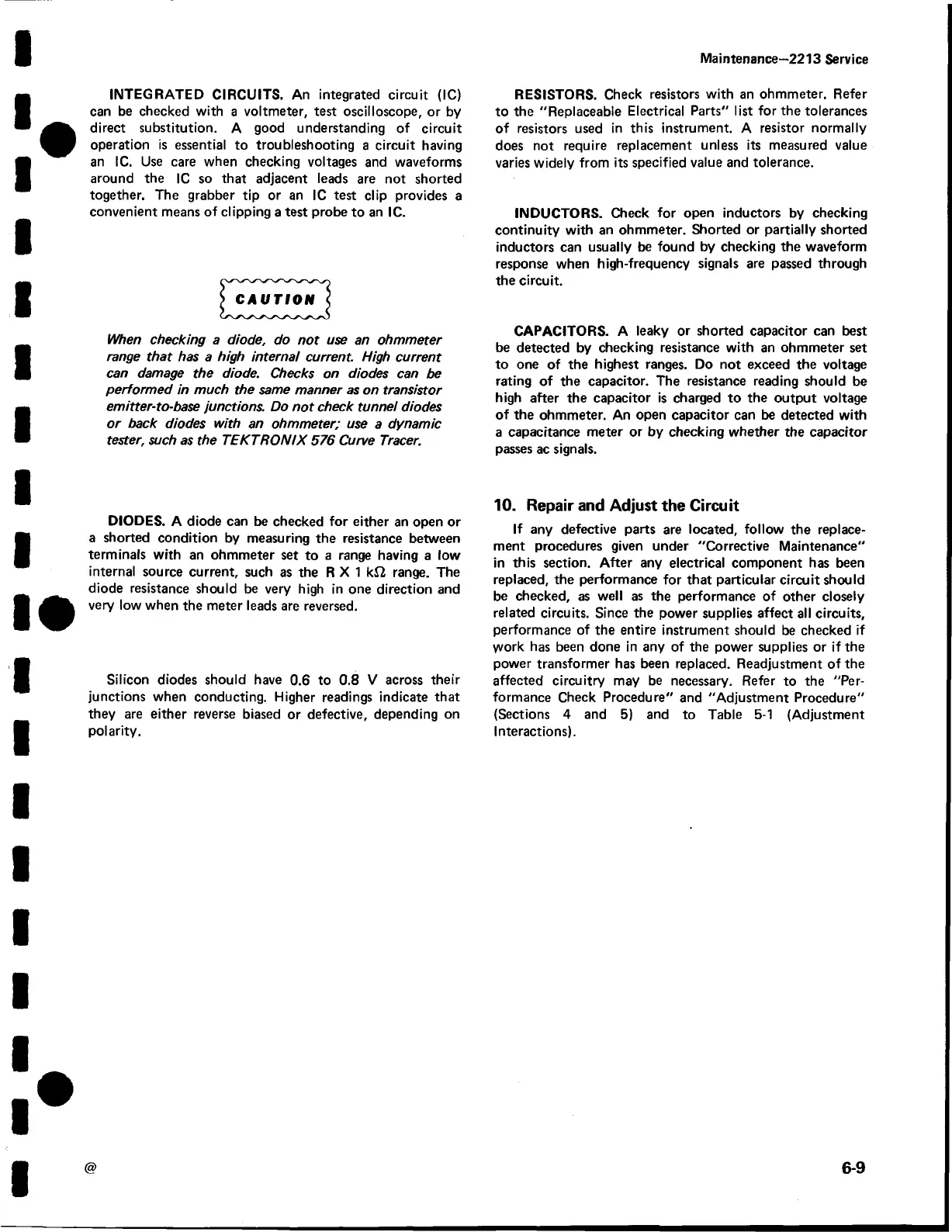Maintenance—2213 Service
INTEGRATED CIRCUITS. An integrated circuit (1C)
can be checked with a voltmeter, test oscilloscope, or by
direct substitution. A good understanding of circuit
operation is essential to troubleshooting a circuit having
an 1C. Use care when checking voltages and waveforms
around the 1C so that adjacent leads are not shorted
together. The grabber tip or an 1C test clip provides a
convenient means of clipping a test probe to an 1C.
When checking a diode, do not use an ohmmeter
range that has a high internal current. High current
can damage the diode. Checks on diodes can be
performed in much the same manner as on transistor
emitter-to-base junctions. Do not check tunnel diodes
or back diodes with an ohmmeter; use a dynamic
tester, such as the TEKTRONIX 576 Curve Tracer.
DIODES. A diode can be checked for either an open or
a shorted condition by measuring the resistance between
terminals with an ohmmeter set to a range having a low
internal source current, such as the R X 1 kS2 range. The
diode resistance should be very high in one direction and
very low when the meter leads are reversed.
Silicon diodes should have 0.6 to 0.8 V across their
junctions when conducting. Higher readings indicate that
they are either reverse biased or defective, depending on
polarity.
RESISTORS. Check resistors with an ohmmeter. Refer
to the "Replaceable Electrical Parts" list for the tolerances
of resistors used in this instrument. A resistor normally
does not require replacement unless its measured value
varies widely from its specified value and tolerance.
INDUCTORS. Check for open inductors by checking
continuity with an ohmmeter. Shorted or partially shorted
inductors can usually be found by checking the waveform
response when high-frequency signals are passed through
the circuit.
CAPACITORS. A leaky or shorted capacitor can best
be detected by checking resistance with an ohmmeter set
to one of the highest ranges. Do not exceed the voltage
rating of the capacitor. The resistance reading should be
high after the capacitor is charged to the output voltage
of the ohmmeter. An open capacitor can be detected with
a capacitance meter or by checking whether the capacitor
passes ac signals.
10. Repair and Adjust the Circuit
If any defective parts are located, follow the replace
ment procedures given under "Corrective Maintenance"
in this section. After any electrical component has been
replaced, the performance for that particular circuit should
be checked, as well as the performance of other closely
related circuits. Since the power supplies affect all circuits,
performance of the entire instrument should be checked if
work has been done in any of the power supplies or if the
power transformer has been replaced. Readjustment of the
affected circuitry may be necessary. Refer to the "Per
formance Check Procedure" and "Adjustment Procedure"
(Sections 4 and 5) and to Table 5-1 (Adjustment
Interactions).
6-9

